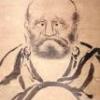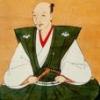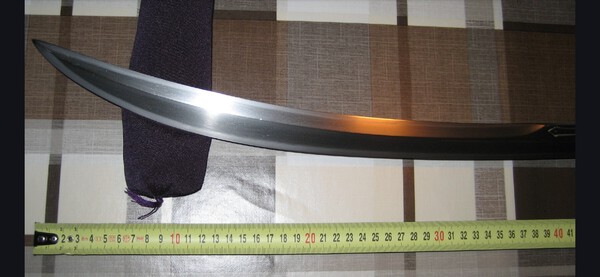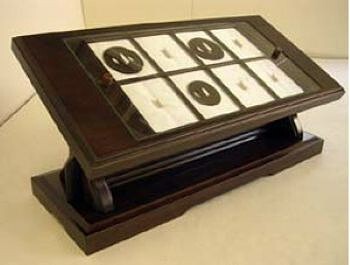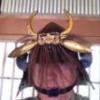All Activity
- Past hour
-
Dear Mark. Please forgive me if I'm stating the obvious but all to often a single description is not adequate, especially as you are conflating the shape of the return, the outline of the boshi and a description of the activity within the boshi. Typically Japanese descriptions are more nuanced and one for this might say something like, ' ko nie dominant choji continues beyond the yokote in midare komi where the boshi is o maru and brushed with nie'. You will have to fill in the description of the kaeri. It is sometimes possible to see a particular boshi and use that to move towards an attribution, sansaku boshi springs to mind, but all too often a simple classification just won't do. It's best to describe what you see rather than seek to assign a specific categorisation to it. Hope this helps a little. All the best.
-
For comparison https://www.antique-swords.com/J36-WW2-Japanese-Army-Officers-Shin-Gunto.html
-

Need Help with translation of Mei please .
Ray Singer replied to Pete's topic in Translation Assistance
I do not see an issue here. The blade appears to be Showa era. -

Need Help with translation of Mei please .
Ray Singer replied to Pete's topic in Translation Assistance
I believe it is Hirada Hidemitsu. -
How deep this mei is? It looks like barely scratched. And post pic of entire blade if you can.
- Today
-
If anyone can translate this I would appreciate it greatly The ink is a bit faint thanks so much Steve
-

Why is saving for a sword a taboo ?
Rivkin replied to Rayhan's topic in General Nihonto Related Discussion
In objective commercial terms the absolutely worst purchase I ever made had a very high ranking paper. For obvious reasons. -
Thanks, Bruno. Oh, and tsuba #2 is SOLD, pending funds.
-
-
Hi All, I have an NBTHK attributed Hyuga Daijo Sadatsugu Katana and I am struggling with the Boshi. It has a Choji midare hamon with bohi. Is the Boshi an Omaru, Don't think it's Jizo or Hakikake?. Just stumped on this one so any help would be greatly appreciated. All the best
-
For me it's a Kunitsugu unokubi zukuri naginata of 53 cm, where the first 40 cm is double edged, which is quite rare. A very elegant piece, wonder where it ended up.
-
It may be helpful if you post overall dimensions and weight, as well as the dimensions of each slot. What material does the tsuba rest on? Is it felt, cotton, wood etc...?
-
Hello, i sell here a Display stand for 8 Tsuba, made of wood. The condition is new. Price is 550 euro, shipping is extra. Tom
-
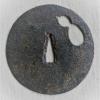
Tsuba Question from Bavaria, Germany
ROKUJURO replied to Christopher's topic in General Nihonto Related Discussion
Looks like a souvenir item to me. I cannot imagine it in a collection or museum. -
Hello, i sell here a fine Kozuka Kogai Set in shakudo. The Set is made in Katagiri - bori , and sign with a 2 kanji signature of Yasunobu. The Set is in good gondition. Price is 1250 euro. Shipping is extra. Tom
-

Tsuba Question from Bavaria, Germany
Hokke replied to Christopher's topic in General Nihonto Related Discussion
To me it looks like a casting. The copper finish on the raised elements seems to be a plating or coating, as there are multiple areas where it has transferred onto the base surface. As Bazza mentioned the hitsu are poorly shaped and the fukurin is inconsistent in width and thickness. Not sure if the surface texture is supposed to nanako or ishime, but either way it looks inconsistent as well. -
George KN started following What do you call these?
-
@Steve Waszak Is this your tsuba? If so, would you kindly share more photos with us? Truly, this is a stunning piece. Wow!!!
-
so far, two of the blades are wakizashi and one katana. I've seen the one you posted piers but didn't include it in my list. I own one of the wakizashi and it's a fine sword with a kaneiye tsuba
-
Interesting idea, Bruce.
-
So, possibly both of these are tied to the buyer rather than the smith? I have that kuyomon on blades from 2 other smiths.
-
https://www.e-sword.jp/wakisashi/1810-2005.htm Later (Taisho 10) Kanenori using a Kuyomon.
-
Following. Would like to add this to the Stamps doc. Something I found searching, link HERE "Another interesting aspect of the Botan flower is its cultural significance. In Japan, the flower is considered a symbol of the samurai warrior class and is often depicted in art and literature. It is also associated with the annual Boys’ Day festival, where families display ornamental Botan flowers to celebrate the strength and courage of their sons. In Chinese culture, the Botan flower is a popular motif in embroidery and is believed to bring good luck and prosperity. ..... Additionally, in Japanese culture, the Botan flower is considered a symbol of wealth and honor. It is often used in traditional Japanese art and is a popular motif in kimono designs. The flower is also associated with the Buddhist concept of impermanence, as its beauty is fleeting and short-lived. In Chinese culture, the Botan flower is believed to have medicinal properties and is used in traditional medicine to treat various ailments."


